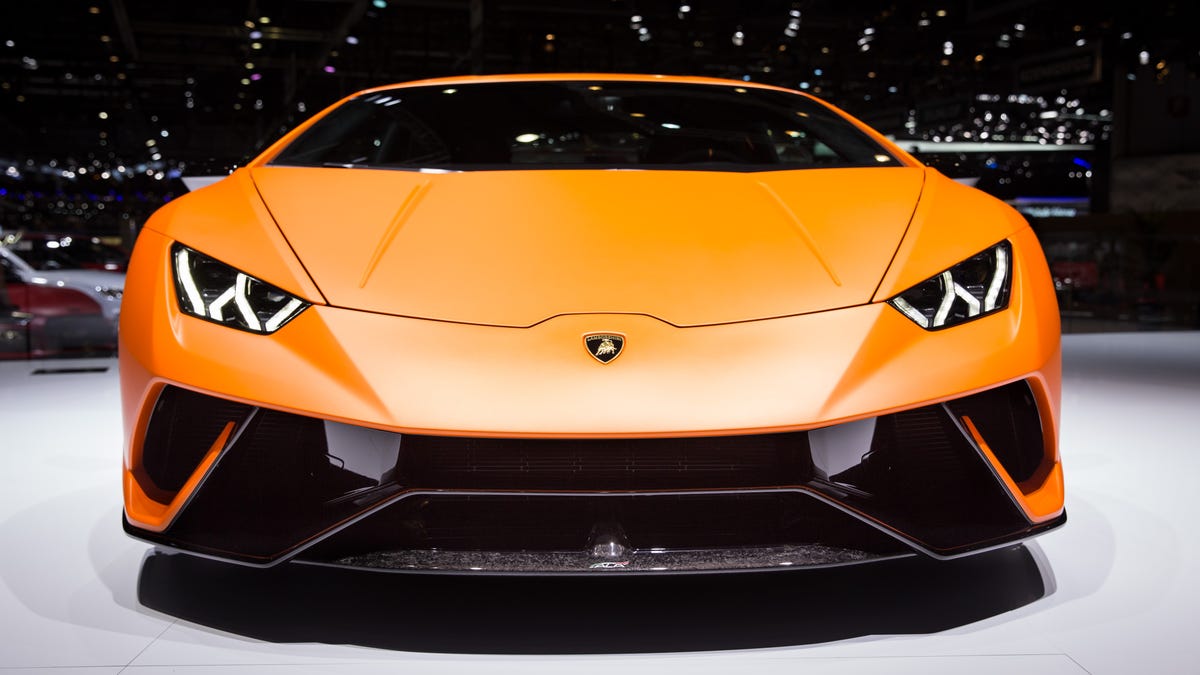Maurizio Reggiani on Huracan Performante and how the 'Ring was won
Join us for a conversation with Lamborghini's Director of Research and Development on just how the hell the Performante pulled off that Nurburgring lap time.

Now that we've shown you a little proof that Lamborghini's production-record Nurburgring lap time is legit, it's time to delve deeper on just how the company managed to get all that speed from a car that, judged purely by the numbers, shouldn't be quite that quick.
First, let's run down those numbers. The Huracan Performante adds about 30 horsepower to the base car, giving you a total of 631hp. Weight is down some 90 pounds over the base car, too, thanks largely to more extensive use of more advanced composites, but Lamborghini Director of Research and Development Maurizio Reggiani tells me the real advancements come from the aerodynamics.
"Aerodynamics were one of the weaker points of our car," he said during an interview at the Geneva Motor Show. "We decided it was important to have much more downforce in our car. Minimum was to be superior to 5X." Downforce gives you more grip in the corners, enabling you to go faster around a race track like the iconic, 12.9-mile Nurburgring. However, that course also has long straights, so you don't want to add too much drag.
"There were several discussions about movable spoilers," Reggiani said, "but all of these systems have weak points: weight, packaging, long time of activation... we take inspiration from the stalling of wings in an airplane."
The Performante uses active aerodynamics on both the front and the rear of the car, but unlike the movable wings seen on some other supercars, like the Pagani Huayra Roadster for example, the external aerodynamic appendages on the new Huracan are fixed. They instead work by ducting air through channels and out vents.
That forged composites rear wing is hollow and acts as an air channel. It also looks badass.
The rear wing on he Performante is hollow and features a set of vents along the bottom. Using a series of tubes, air can be channeled up through the wing supports and out these vents, effectively stalling the wing, dramatically reducing the downforce it generates while also slashing its drag.
Taking it to the next step, Lamborghini split the vents on the left and the right sides of the car, and can control downforce on the front and rear separately. This means the Performante can actually add more downforce on the front under braking, on the rear during acceleration and can modulate it left-to-right during cornering.
"Like when you got to ski," Reggiani said, "you push on one foot and you turn around... We achieve something like 7X more downforce, but also when it's needed, due to the stalling, reduce downforce and reduce dramatically the drag of the car."
This is partly enabled by Lamborghini's use of molded, forged composites to create these aerodynamic surfaces, rather than the traditional carbon that is laboriously laid-up by hand. The forged composites are much easier to make in hollow shapes, meaning they can serve to channel air while also providing downforce.
To take advantage of the aerodynamics, Reggiani says the car's suspension has a "completely different setup," including custom bushings and the obligatory stiffer springs. And don't forget those special Pirelli tires that surely had a huge impact, too. The result? A 6:52 lap time around the most epic course on the planet.

